Toilet Training
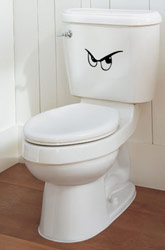
There are many ways to approach this task and often parents are anxious to get it started as soon as possible. The good news is that eventually every neurologically healthy child will learn to use the toilet. It’s important not to get over-anxious or fixated on the timeline of potty training as each child is different. Forcing the issue may cause your child to shy away from it.
Big toilets are scary for children and if they cannot get on and off easily and without fear it will hinder potty training.
Is your child ready?
If your child is able to do/shows signs of the following then s/he is likely ready:
- Pull pants down (and up)
- Show pride in accomplishments
- Tells you when s/he has a dirty diaper
- Has regular bowel movements – around the same times daily
- Can follow simple instructions
- Knows how to clean up toys and put them in their places
- Is dry for up to 2-3 hours at a time during the daytime
- Has words for urine and stool
Are you ready?
If you are going through any big life changes: a new baby is arriving in less than a month (or just arrived), you are moving, there is an imminent separation/divorce, or you are changing caregivers – then hold off on potty training for a while. It would be ideal if potty training could happen 2-3 months away from a major life change.
Can you put aside three days where you do not go out or make plans so that you can dedicate the time for potty training? If you have more than one child at home it would be ideal if two adults were available for those 3 consecutive days, or for some of the time to give you a break.
The Potty
It is great when your child can use the big potty with just a seat on top so that you don’t have any clean-up, but this is not the way to start. Big toilets are scary for children and if they cannot get on and off easily and without fear it will hinder potty training. Start with a potty that is stable and low to the ground. Don’t get one that sings and lights up or it becomes a toy– not something specifically recognizable to sit upon and go to the bathroom. Children in the 15-24 month age range love imitating what adults do (they can jabber on your cell phone though I’m sure you didn’t walk them through the steps) and, given a potty that looks like a potty, they know what to do.
The Quick and Easy Method
Summed up in one word: Naked. Note: If you’re uncomfortable with your child being naked, you can use regular underwear and follow the steps below.
Second important word: Outside. If possible, being outside allows you to have a relaxed attitude about accidents, which prevents the pressure and anxiety that can accompany potty training gone wrong. Outside, weather permitting, is fun for children – the different/adventure factor. If you do not have a safe, enclosed outdoor space there are tips for indoor training below.
The key to quick potty training is letting your child feel the urge to go to the bathroom and then see the natural evolution of this. The ideal is choosing warm weather days and spending those days outside. If the weather is cold and you can’t wait for it to warm up go with the indoor training and set the house thermometer at a balmy level.
As soon as your child awakens in the morning go outside into the backyard ideally without clothing on bottom- so bottom-half naked or with underwear. Have a picnic breakfast and be prepared for a day of outdoor fun; lots of water and drinks to promote lots of urine; high fiber foods (fruit, fruit, and more fruit) to promote soft stools. Make it fun and allow for sand play, water play, bubbles, and gardening all while observing your child’s behavior. If you notice your child going to the bathroom, or making a face as if it’s coming, give him/her options:
Do you want to go on the grass, in the bushes, pee on the tree (a big hit with the little boys) or on the potty? And let him/her choose. If s/he chooses the potty feel free to do a happy dance (the sillier the better…and the more likely to produce a repeat performance) or give a little reward – a sticker, a penny, or if you’d like a tiny treat (tiny – one Smartie or M&M). If your child at this point is anxious offer the pull-ups you have conveniently kept hidden outside. Allow him/her to go in a pull-up by the potty and then remove the pull-up for more outdoor play. Have a picnic lunch outdoors. At naptime go inside, put a pull-up on your child, and take a break. When nap is over remove the pull-up and head back outside for more outdoor play, books, and a picnic dinner. Continue to encourage sitting on the potty. When the nighttime ritual begins, go inside for a bath and bring the potty in too. It’s great to get into the habit of sitting on the potty before bath and before bed. Keep a few special books in the bathroom for potty sitting time. Put on a diaper/pull up for bedtime. Begin again the next morning. Kids love being naked or the feel of real underwear and love being outside. So if your child has shown signs of readiness s/he will most likely be 75% potty trained using this method in 3 days.
Indoor variation- most is the same as above, only the location is different.
Choose an area of your house, if possible, that has no carpeting or upholstered furniture and set this area up as your playground for a few days. This will allow you to relax about accidents and clean up with little fuss. If your child has an accident, calmly clean it up and in a fun/nice way let him/her know that maybe next time s/he can try the potty.
The Three Days Are Over, Now What?
After the three day training period, when you move inside, allow your child to choose his/her underwear and keep a pile of pull-ups in the bathroom. If your child wants to go to the bathroom & put a pull up on instead of sitting on the potty, but only wears the pull up in the bathroom and it is removed before playtime resumes, you’re really just about there. Don’t look at this as a negative – your child is aware of the need to go pee/poop, is able to hold it in while making his/her way to the bathroom, goes in an appropriate place, and can leave it behind when done!
Keep the special books in the bathroom and consider a star chart for success at using the potty. There does not need to be an end reward – stickers alone often do the job perfectly!
Get into the habit of having your child sit on the potty upon awakening, 10-15 minutes after meals, before nap & bedtime, and before getting into the car.
Remember that naptime and bedtime dryness may not follow closely behind daytime dryness. Don’t toss out those diapers until you have weeks of dryness at naptime and/or bedtime.
Side notes:
- You will need to help your children wipe until they are probably three or four years old. Longer for those who have soft bowel movements.
- Boys potty train sitting down (unless in the garden watering the bushes and trees).
- Flushing of bowel movements can be scary for small children. Allow them to choose if they want to flush or if they want you to do it after they leave the bathroom.
Potty training done with punishment and negative/forceful energy can have long lasting negative effects on a child.
Do Not:
- Punish your child for accidents
- Create anger and anxiety around the potty training
- Force your child to use the potty – have other options as described above.
If your child is not having 70+% success by the end of the third day period then you may want to stop potty training for a couple of months before you re-try. It’s possible you misread the signs of readiness initially. And if it is not working you cannot force it. Better to just give it a rest for a while and then come at it with fresh positive energy when you are all ready again.
Potty training is an opportunity for your child to learn a new skill and feel proud of it. If you treat it in a positive way your child will see it as a fun adventure. Celebrate the successes, overlook the mistakes and soon you will be able to sit back and really enjoy not having to change those poopy diapers!
- Beautiful Smiles are Forever
- Bed Wetting / Nocturnal Enuresis
- Childhood Obesity
- Childhood Vaccinations
- Circumcision
- Diet and Vitamins During Pregnancy
- Exercise and Weight Gain During Pregnancy
- How to Choose a Pediatrician
- Infections – Hard to Avoid?
- Introducing Solids
- Pediatric Dentistry Q & A
- Sex and Pregnancy
- Toilet Training
- Your Child’s Development
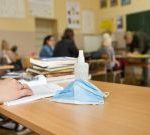 High Viral Loads Make Kids ‘Silent Spreaders’ of COVID-19
High Viral Loads Make Kids ‘Silent Spreaders’ of COVID-19 Clotting Tied to COVID-19 May Harm the Placenta
Clotting Tied to COVID-19 May Harm the Placenta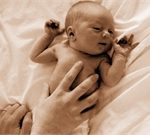 ‘Kangaroo Care’ Has Big Health Benefits For Preemies
‘Kangaroo Care’ Has Big Health Benefits For Preemies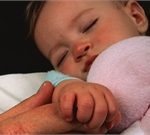 Babies Are Spared Severe COVID-19 Symptoms
Babies Are Spared Severe COVID-19 Symptoms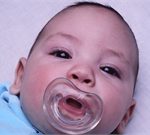 Sleepless Babies May Face Emotional Troubles as Kids
Sleepless Babies May Face Emotional Troubles as Kids Secrets to Soothing a Cranky Baby Safely
Secrets to Soothing a Cranky Baby Safely How to Protect Your Baby Against Eczema
How to Protect Your Baby Against Eczema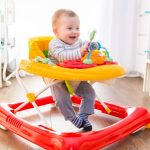 How to Protect Your Baby From Unsafe Products
How to Protect Your Baby From Unsafe Products How to Soothe Baby’s Teething Pain Safely
How to Soothe Baby’s Teething Pain Safely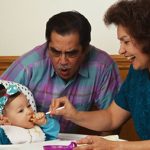 How to Protect Your Child From Choking
How to Protect Your Child From Choking How to Tame Morning Chaos
How to Tame Morning Chaos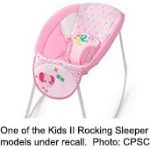 Nearly 700,000 Infant Rocking Sleepers Recalled Due to Infant Deaths
Nearly 700,000 Infant Rocking Sleepers Recalled Due to Infant Deaths How Much Does Your Kid Weigh? Chances Are, You’re Underestimating
How Much Does Your Kid Weigh? Chances Are, You’re Underestimating When You Go From a Family of 3 to a Family of 4
When You Go From a Family of 3 to a Family of 4 Bringing Baby in a Lyft, Uber? Child Car Seats Are Rarely Included
Bringing Baby in a Lyft, Uber? Child Car Seats Are Rarely Included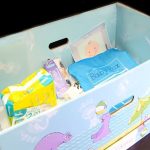 Experts Sound Warning About ‘Baby Boxes’
Experts Sound Warning About ‘Baby Boxes’ A-C-T to Prevent Hot Car Tragedies
A-C-T to Prevent Hot Car Tragedies Smart Steps for a Safe Nursery
Smart Steps for a Safe Nursery More Than 1 Day of First-Trimester Bleeding Ups Odds for Smaller Baby
More Than 1 Day of First-Trimester Bleeding Ups Odds for Smaller Baby Rear-Facing Car Seats Protect Tots in Crashes From Behind: Study
Rear-Facing Car Seats Protect Tots in Crashes From Behind: Study Baby Sitters, Relatives Often Unaware of SIDS Risk
Baby Sitters, Relatives Often Unaware of SIDS Risk Window Blinds: A Silent Killer in Your Home
Window Blinds: A Silent Killer in Your Home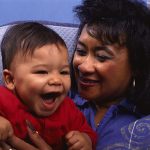 Babies Start Connecting Words Early On
Babies Start Connecting Words Early On Parents Getting Better at Using Car Seats Safely
Parents Getting Better at Using Car Seats Safely Too Many Babies Still Placed on Stomach to Sleep: Study
Too Many Babies Still Placed on Stomach to Sleep: Study Time for Some Summer Sun Safety Tips
Time for Some Summer Sun Safety Tips Can Sharing Your Bedroom With Baby Come With Risks?
Can Sharing Your Bedroom With Baby Come With Risks? Hospital ‘Baby Boxes’ May Help Prevent SIDS in Newborns
Hospital ‘Baby Boxes’ May Help Prevent SIDS in Newborns Fewer SIDS Deaths in U.S., But Gaps Among Racial Groups Remain
Fewer SIDS Deaths in U.S., But Gaps Among Racial Groups Remain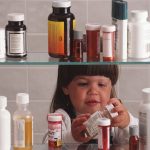 How to Protect Your Child From Accidental Poisoning
How to Protect Your Child From Accidental Poisoning